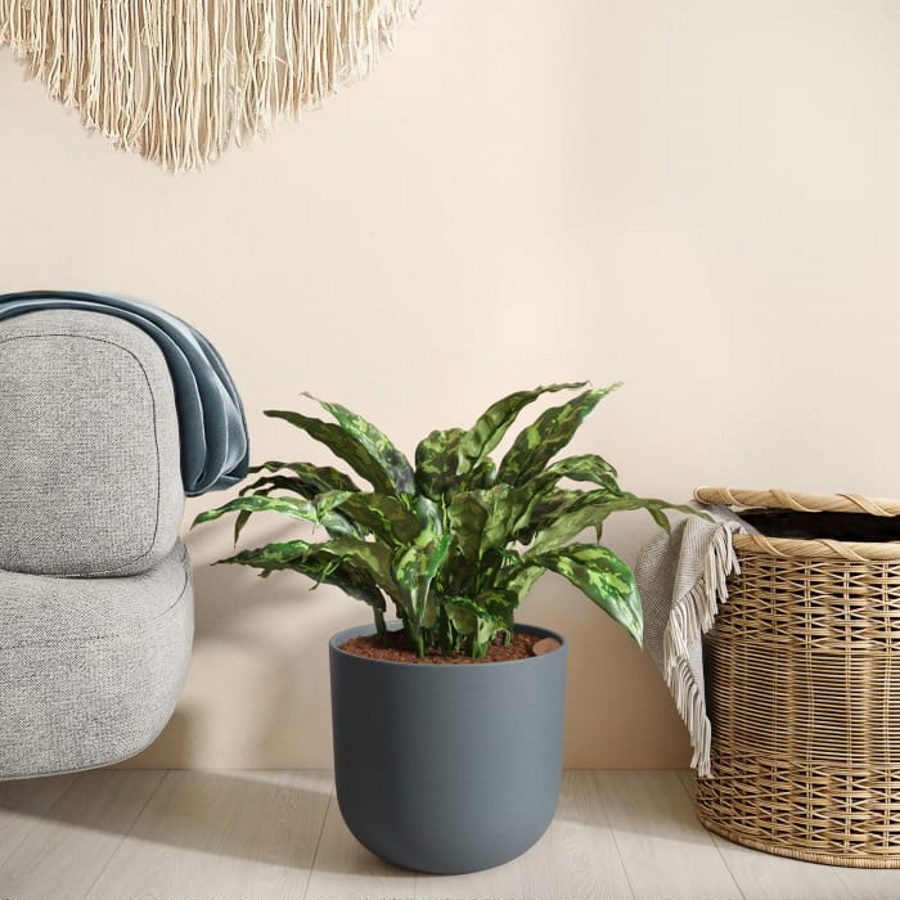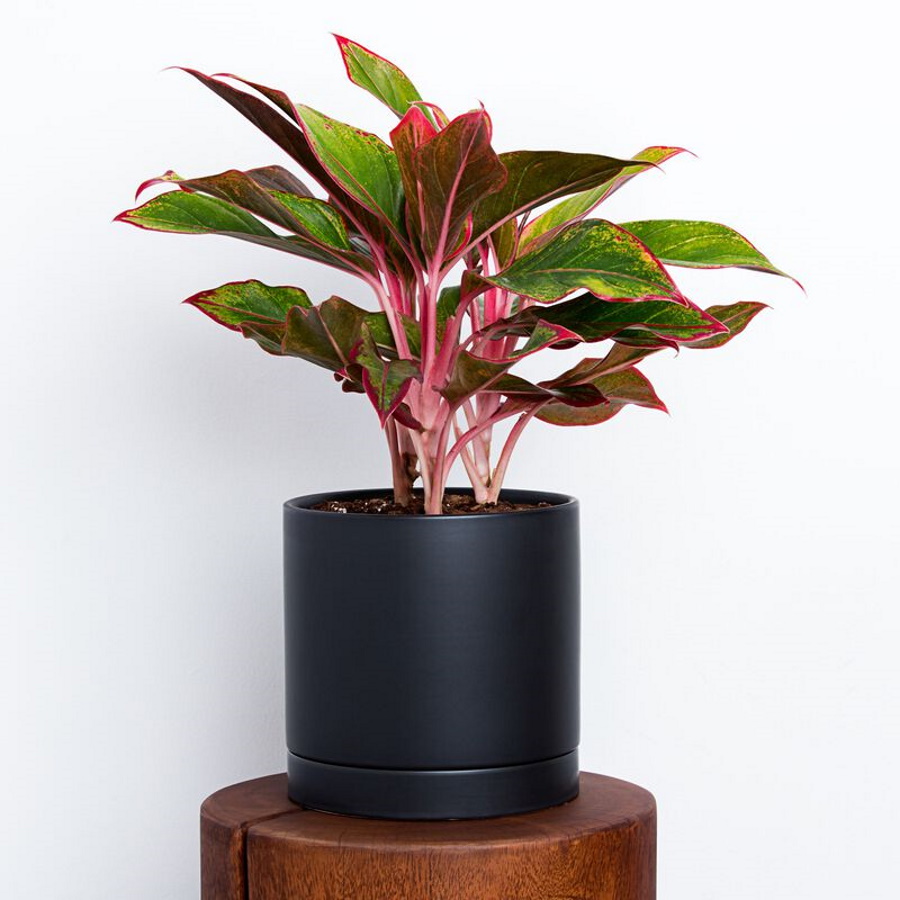Chinese evergreen care guide – 5 expert tips to keep this patterned plant healthy
Aglaonemas are easy to look after and can green up your space with their variegated leaves
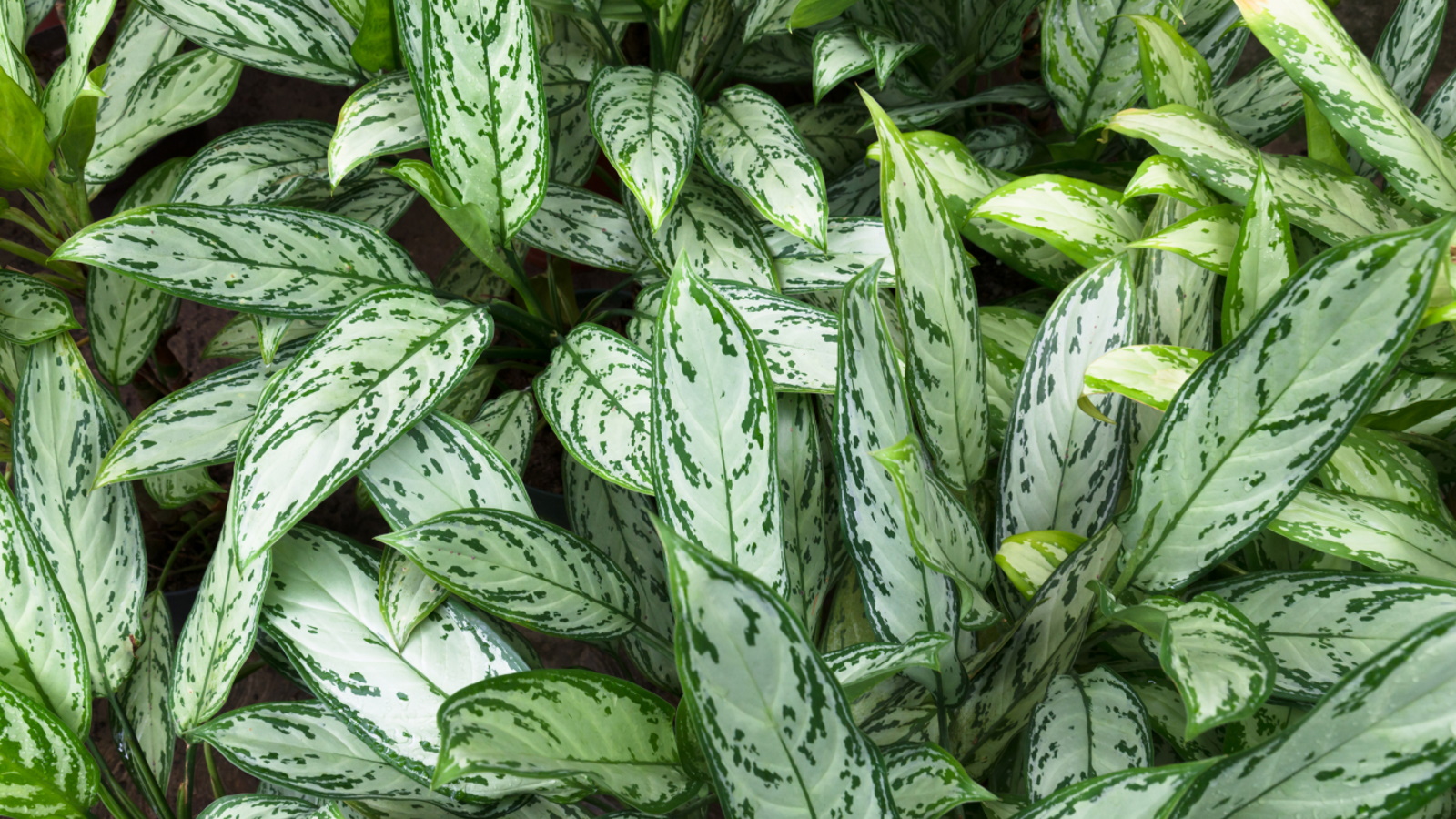

If houseplants with fun foliage are your thing, you need a Chinese evergreen in your life. Among the best indoor plants, Chinese evergreens, or aglaonemas, are a staple for leafy foliage.
Aglaonema plants are native to tropical and subtropical regions of Asia and can grow happily indoors as houseplants. There are lots of different varieties of Chinese evergreens, varying in size, color and leaf shape and pattern. Larger Chinese evergreen varieties like Aglaonema 'Jubilee' can grow around 36 inches in height, while small varieties like Aglaonema 'Red Star' may only grow up to 15 inches tall.
Chinese evergreens are loved by indoor gardeners for their striking variegated leaves. Whether you choose a green aglaonema with large leaves and dark green stripes, or a more colorful one with different shades of reds and pinks, this houseplant is sure to add interest to your houseplant collection.
These plants are generally easy to care for and they will thrive happily in the right growing conditions and if you avoid a handful of common mistakes. Here, we have everything you need to know about caring for aglaonemas with expert advice.
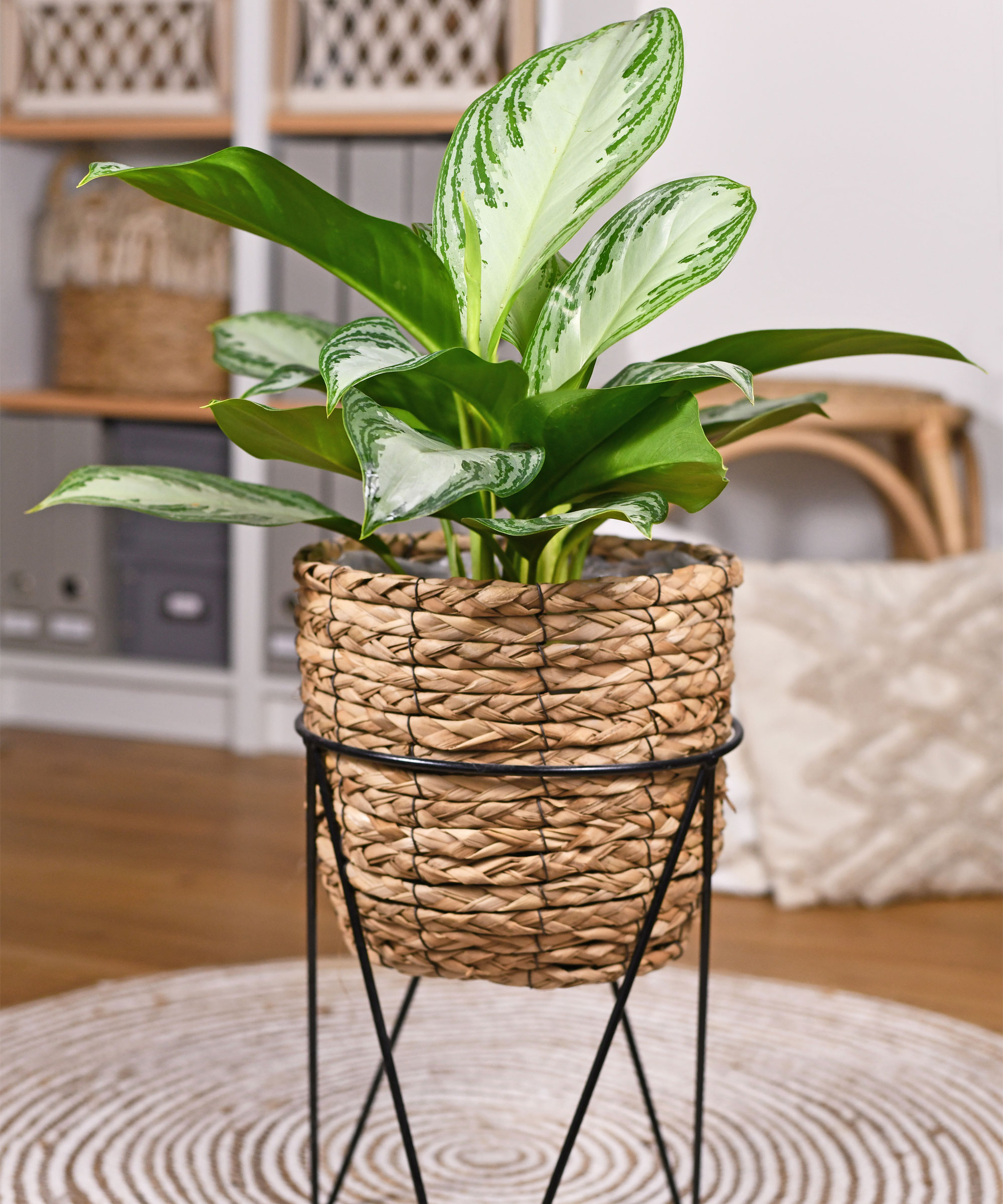
5 expert tips for caring for Chinese evergreens
Chinese evergreens are beautiful plants to grow indoors. You can choose from a whole range of aglaonemas, all of which have striking foliage to add interest to your home. We've gathered expert advice about what you can to do keep these tropical plants happy.
1. Provide consistent lighting
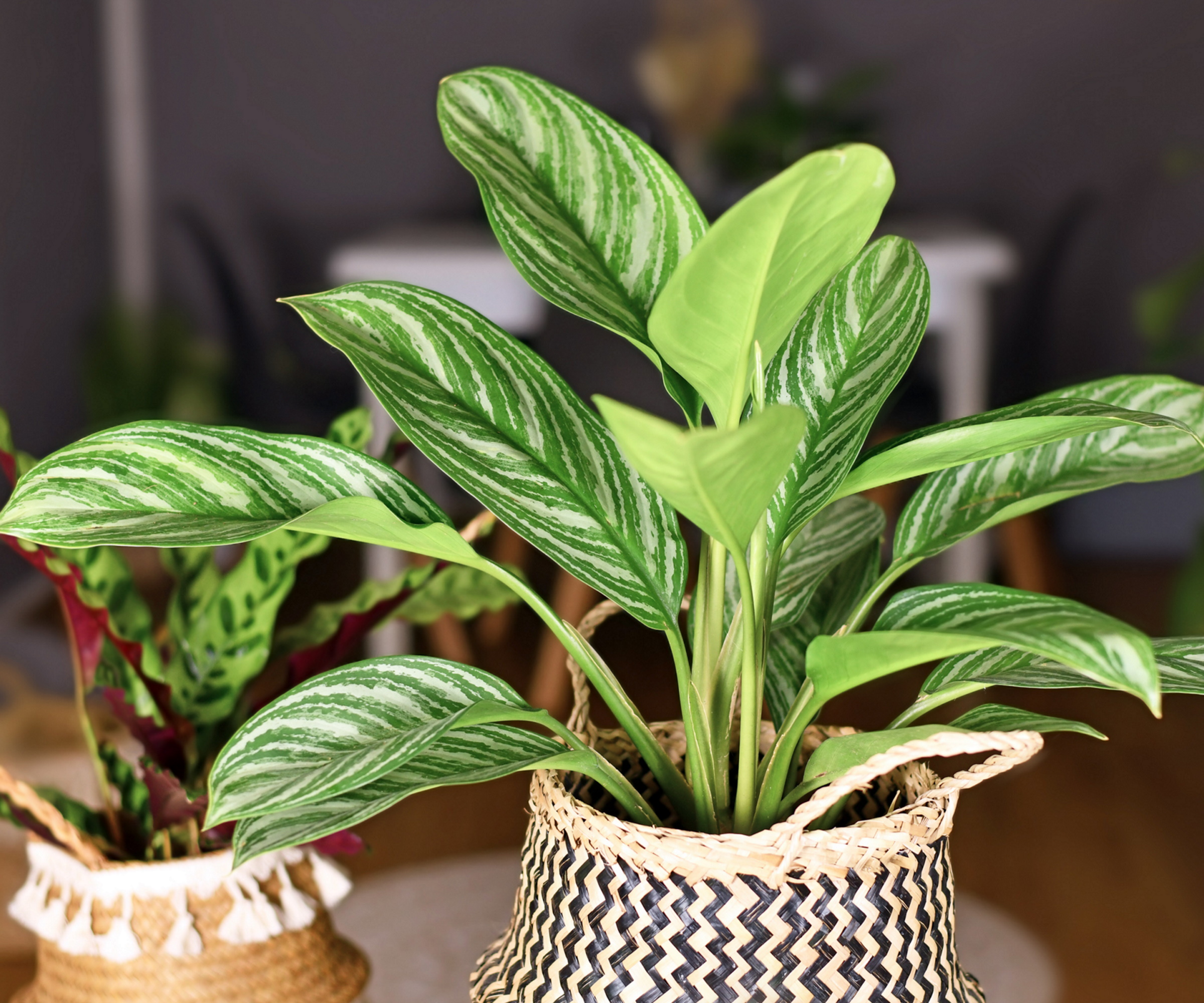
In their natural habitat, Chinese evergreens grow on subtropical jungle floors. They are used to growing in partially shaded areas, but it's important to provide consistent lighting.
'An east or north-facing window works perfectly. Direct, hot sunlight will scorch their leaves, so filter with a sheer curtain. Insufficient light leads to sparse growth,' says Jonathan Ames, landscape designer at BACQYARD.
Your aglaonema will enjoy bright, indirect light, so they also work well in partially shaded corners if you have a larger variety and wish to grow it as a floor plant.

With over 20 years in the industry, Jonathan is a landscape designer at BACQYARD, combining his deep-rooted passion for plants with extensive experience across the country. His expertise ranges from nurturing houseplants to crafting expansive landscapes.
2. Water evenly
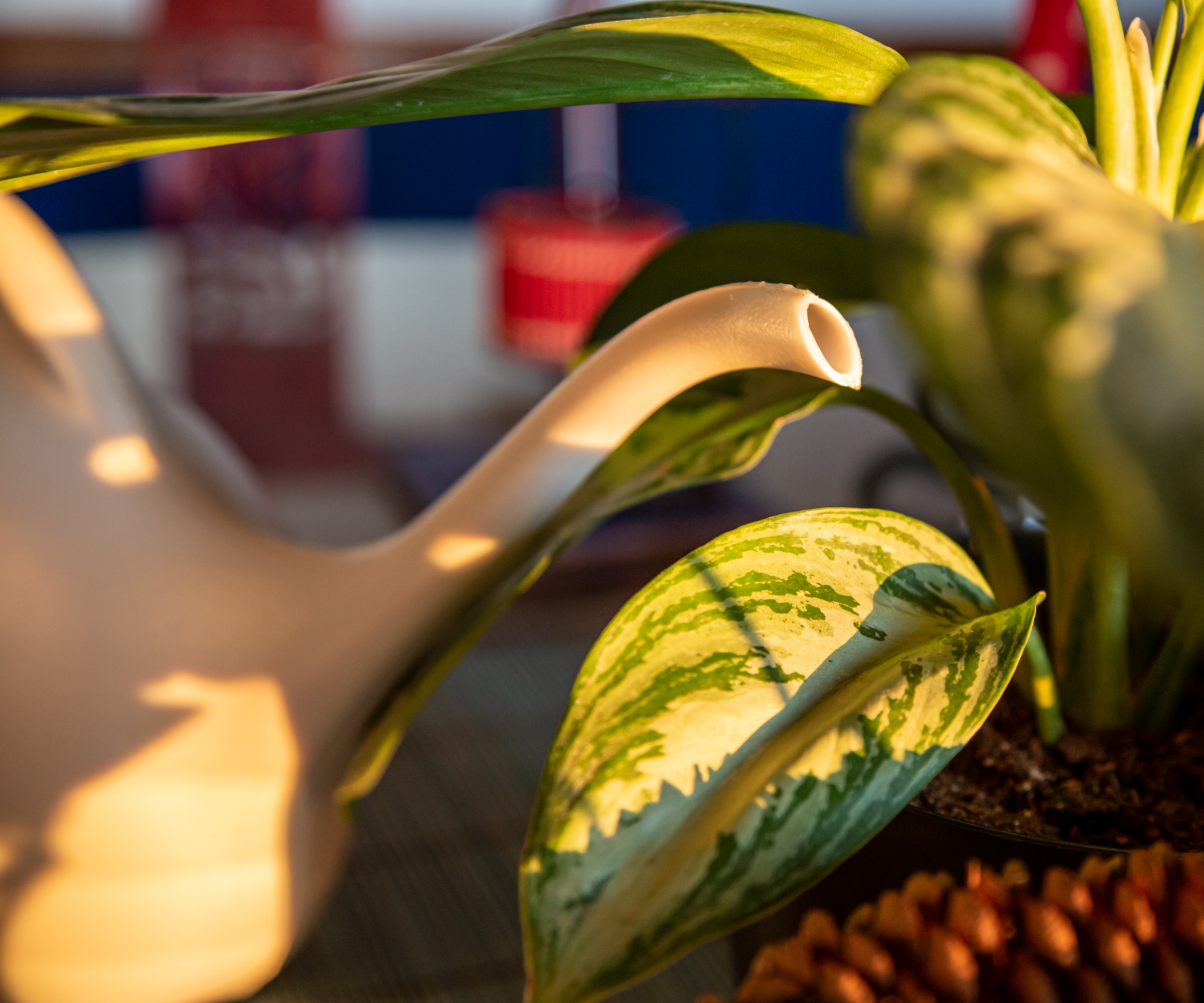
Learning how to water houseplants can be tricky as so many different plants have different needs. When it comes to watering your Chinese evergreen, incorrect watering can lead to Chinese evergreen leaves turning yellow and dropping.
'Chinese evergreen prefers to remain moist, but not soggy. Water when the first half to 1 inch of soil has dried. Water from above or bottom water. Either watering method works well for Chinese evergreen,' says Julie Bawden Davis, indoor plant expert at Healthy Houseplants.
'Bottom watering tends to keep the soil moist for longer, which means less frequent watering. Always water Chinese evergreen and all houseplants with warm to tepid water,' she adds.

Julie Bawden-Davis is a garden author and University of California Certified Master Gardener, who has written several gardening books, including Indoor Gardening The Organic Way. In addition to running HealthyHouseplants.com, she shares indoor gardening advice on her YouTube channel @HealthyHouseplants.
3. Remove yellow leaves
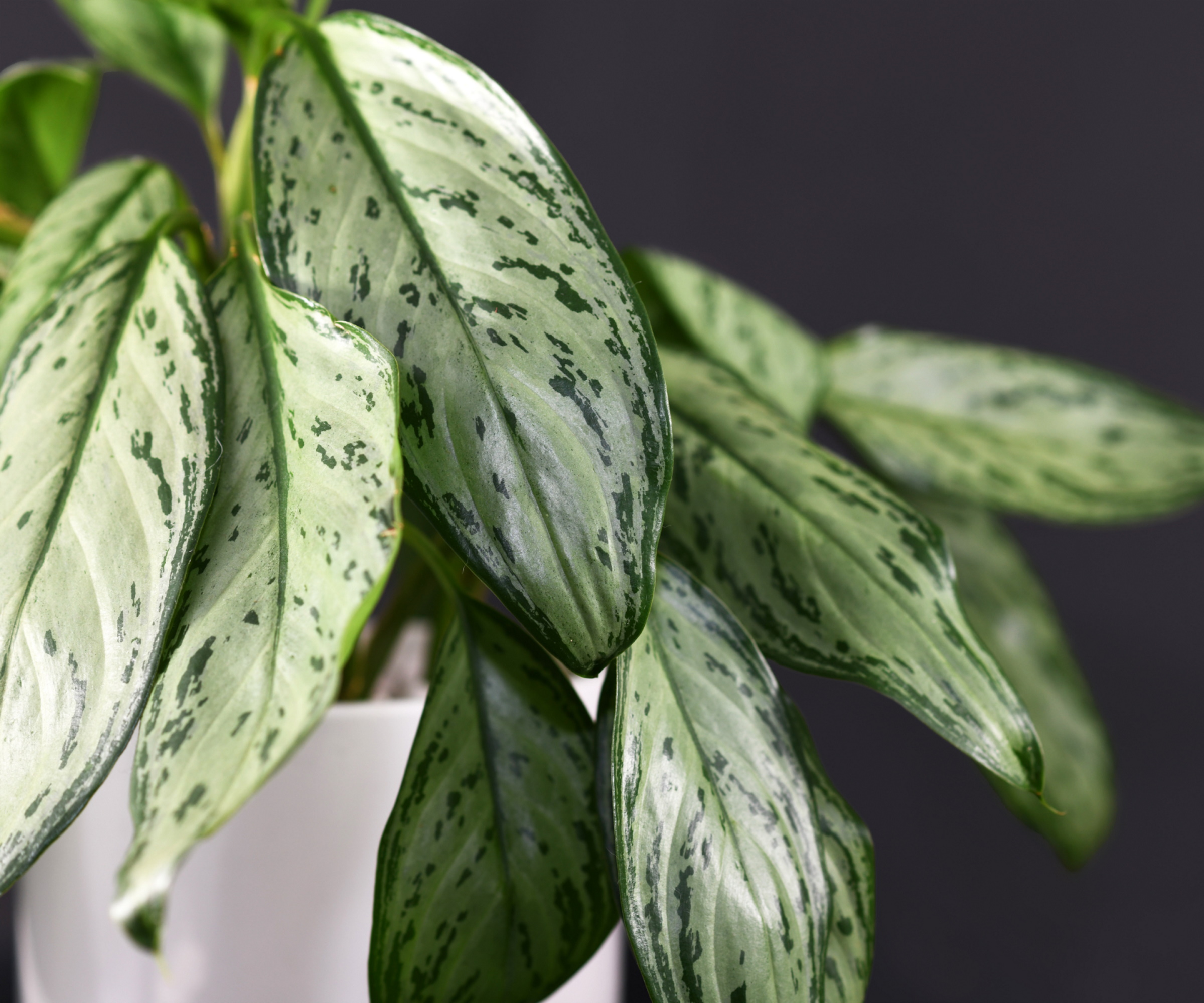
There is a whole host of reasons as to why you might notice the leaves of your Chinese evergreen turning yellow or wilting. It could be a sign that they are overwatered, not getting enough light or they're too cold.
Whatever the case, it's a good idea to do some light pruning and chop off those concerning-looking leaves to help keep the plant healthy and promote further growth.
'Trim off dead or yellowed leaves at the base of stems with clean shears. You can also pinch back leggy stems to encourage bushiness,' says Jonathan.
Removing older leaves can also help keep the Chinese evergreen looking its best. 'Cut the plant back to a set of leaves if it begins to become rangy. This will occur on more mature plants,' says Julie.
4. Boost nutrients

If you want to help your aglaonema to grow bigger, become more full and fill up more space, you can use fertilizer.
'Fertilize every 6-8 weeks during growing seasons with balanced, water-soluble plant food,' says Andy Burde, houseplant expert at the House Plant shop.
Fertilizing through spring and summer will optimise growth, but be careful not to fertilize too often and stick to only a handful of times during warmer months. 'This provides added nutrients without risk of build-up,' says Jonathan Ames.
There are lots of fertilizers on the market that you can use for Chinese evergreens, like this houseplant special fertilizer from Garden Goods Direct.

Andy is a seasoned horticulturist and houseplant expert with HousePlantShop.com. With years of experience in plant care, propagation, and interior gardening, he specializes in nurturing healthy, vibrant houseplants and advising enthusiasts on best practices. His focus is on sustainable and practical methods that cater to both beginners and advanced plant lovers.
5. Repot every couple of years
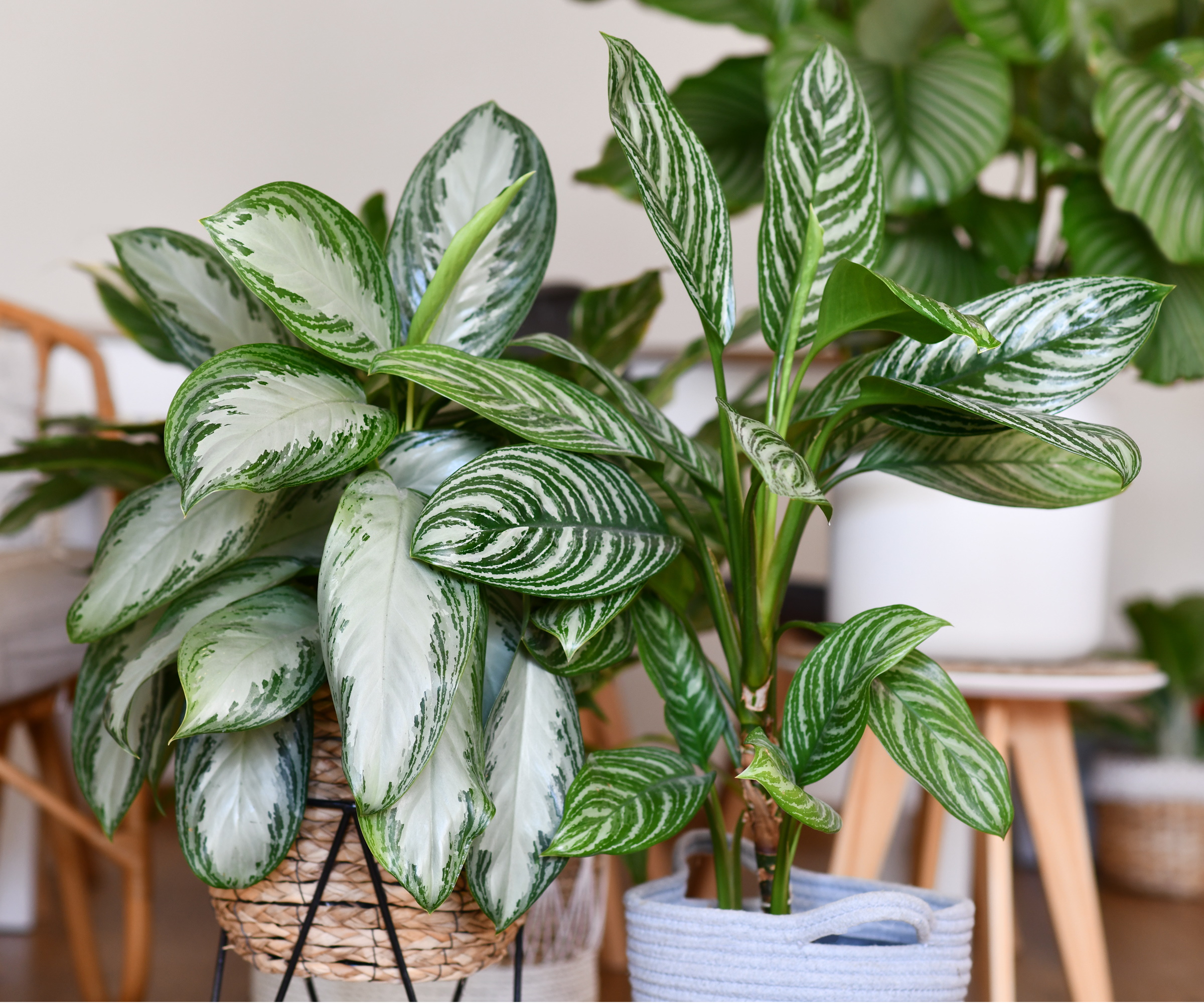
Chinese evergreens are slow-growers, but it's still a good idea to repot them when they become too large for their current container. Not doing so could risk it becoming pot-bound, restrict growth and hinder the appearance of the foliage over time.
'They should be repotted when water rushes through the soil quickly, which indicates that there are more roots in the pot than soil,' says Julie.
You will also know that it’s time to repot because you’ll find that you are watering more frequently than usual. Generally, the plant requires repotting about once a year,' she adds.
It's easy to repot an aglaonema by choosing a larger container, carefully removing the plant from it's current pot so that roots don't get damaged and then placing it in its new home with fresh soil.
Shop Chinese evergreens online

This aglaonema has stunning, red-tinted foliage. Comes with a ceramic container and arrives around 14-18 inches tall.
FAQs
Do different varieties of Chinese evergreen need different care?
Even though there are lots of varieties of aglaonemas to choose from, all Chinese evergreens require the same or similar care. The key points are to provide bright, indirect light, keep moist but not soggy and prune yellowing leaves.
Jonathan Ames, landscape designer at BACQYARD, notes that some varieties will have slightly different lighting needs. 'Some such as 'Silver Bay' demand brighter light to maintain white/silver leaf variegation,' he says. It's important to always research the needs of your Chinese evergreen to ensure it can thrive happily.
How do I keep Chinese evergreen leaves bright?
Aglaonemas, or Chinese evergreens, are known for their stunning variegated leaves which come in an array of patterns and colors. You can keep their foliage bright by ensuring they are growing in optimal conditions, including bright, indirect light. Larger varieties of Chinese evergreens have big leaves that may collect dust. Using a damp cloth, you can wipe the leaves clean to keep them looking bright.
Can you propagate Chinese evergreen plants?
Yes, it is possible to propagate Chinese evergreens in both soil and water. For both methods, take cuttings of healthy stems. You can then either place the stems in water on a warm windowsill and wait for roots to develop, or dip the stems in a rooting powder and place in soil. Be careful not to make common propagation mistakes which may cause it to fail. Aglaonemas are slow-growers, so it will take slightly longer for roots to develop and for an established plant to grow.
Growing Chinese evergreens can be a joy, with their beautiful patterned leaves adding interesting foliage to your home. They are easy to look after and just some essential care will keep them thriving. They are slow-growing plants, so if you're looking for some more instant indoor foliage there are also lots of fast-growing plants to choose from.
Sign up to the Homes & Gardens newsletter
Design expertise in your inbox – from inspiring decorating ideas and beautiful celebrity homes to practical gardening advice and shopping round-ups.

Tenielle is a Gardens News Writer at Homes & Gardens. She holds a qualification in MA Magazine Journalism and has over six years of journalistic experience. Before coming to Homes & Gardens, Tenielle was in the editorial department at the Royal Horticultural Society and worked on The Garden magazine. As our in-house houseplant expert, Tenielle writes on a range of solutions to houseplant problems, as well as other 'how to' guides, inspiring garden projects, and the latest gardening news. When she isn't writing, Tenielle can be found propagating her ever-growing collection of indoor plants, helping others overcome common houseplant pests and diseases, volunteering at a local gardening club, and attending gardening workshops, like a composting masterclass.
-
 ‘It leads to more headaches than it's worth’ – 4 reasons you should never store things in your oven, including fire risks and serious illness
‘It leads to more headaches than it's worth’ – 4 reasons you should never store things in your oven, including fire risks and serious illnessYour oven is for cooking, and cooking only, experts urge
By Chiana Dickson
-
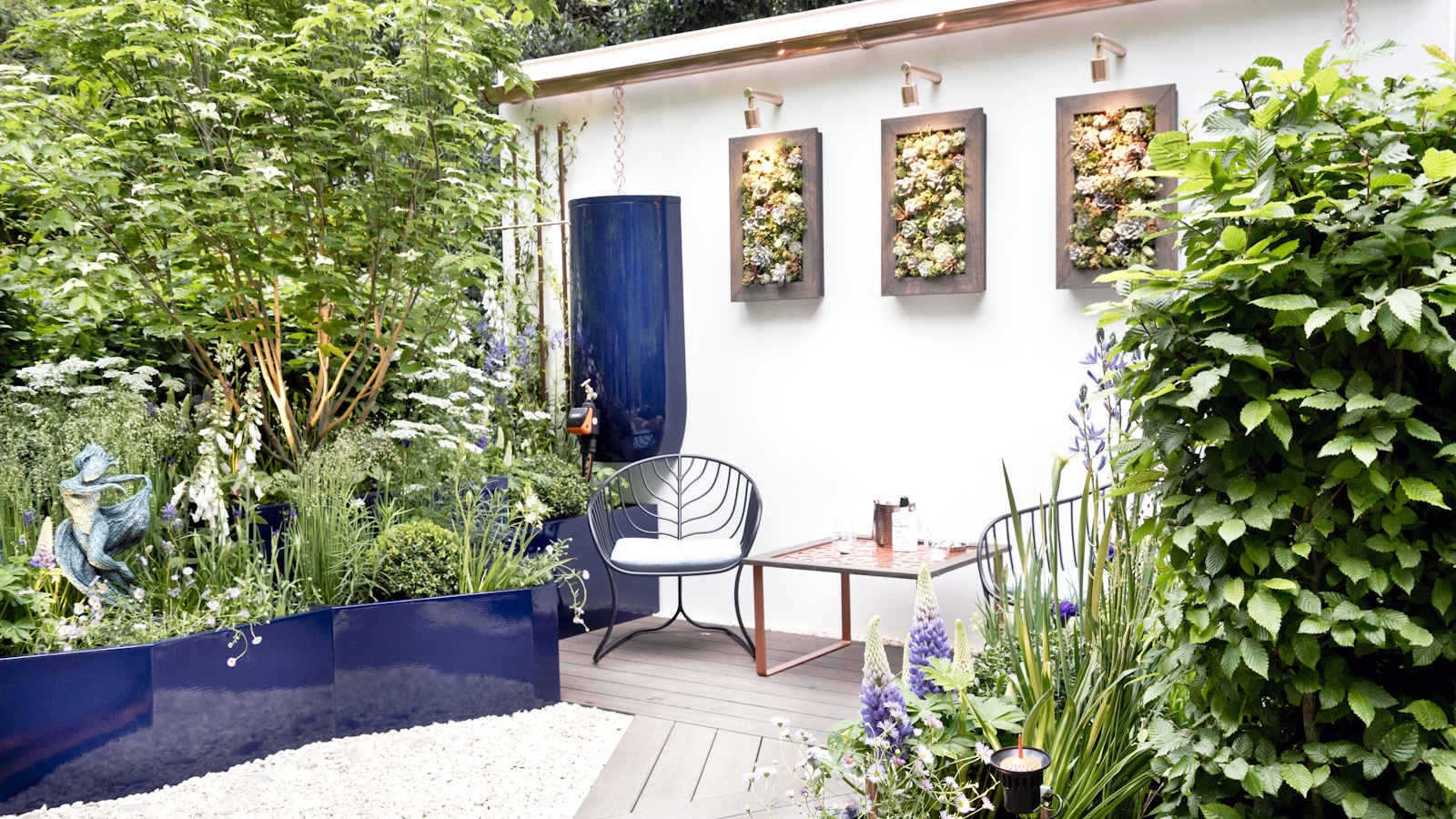 Urban gardening ideas – 7 creative ways to grow in small spaces, balconies, containers, indoors, and more
Urban gardening ideas – 7 creative ways to grow in small spaces, balconies, containers, indoors, and moreMake the most of your space with these innovative ways to garden
By Tenielle Jordison
